 W
WItalian Libya was a colony of the Kingdom of Italy located in North Africa, in what is now modern Libya, between 1934 and 1943. It was formed from the Italian colonies of Cyrenaica and Tripolitania that were taken by Italy from the Ottoman Empire in the Italo-Turkish War of 1911 to 1912. They were unified in 1934 by governor Italo Balbo, with Tripoli as the capital.
 W
WThe Fourth Shore or Italian North Africa (ASI) was the name created by Benito Mussolini to refer to the Mediterranean shore of coastal colonial Italian Libya and WW II Italian Tunisia in the fascist era Kingdom of Italy, during the late Italian Colonial Empire period of Libya and the Maghreb.
Arab Lictor Youth was a fascist youth organization for Arab youth in Italian Libya.
 W
WThe Ascari del Cielo were the first paratroopers of the Italian armed forces. They all were born in Libya and with Arab-Berber ethnicity. They constituted the majority of the troops of the Battalion Fanti dell Aria, created in 1938, that fought in the Desert War during World War II.
 W
WThe Auto-Saharan Companies were Italian military units specialised in long range patrols of the Sahara Desert. The units operated from the late 1930s to the Italian surrender in 1943.
 W
WThe Colonial Order of the Star of Italy was founded as a colonial order of knighthood on 18 June 1914 by King Victor Emmanuel III, to reward soldiers deployed to the colony of Libya. The order had fallen into abeyance by 1943, when Allied forces conquered the colonies of Italian North Africa.
 W
WItalian Cyrenaica was an Italian colony, located in present-day eastern Libya, that existed from 1911 to 1934. It was part of the territory conquered from the Ottoman Empire during the Italo-Turkish War of 1911, alongside Italian Tripolitania.
 W
WItalian Tripolitania was an Italian colony, located in present-day western Libya, that existed from 1911 to 1934. It was part of the territory conquered from the Ottoman Empire after the Italo-Turkish War in 1911. Italian Tripolitania included the western northern half of Libya, with Tripoli as its main city. In 1934, it was unified with Cyrenaica in the colony of Italian Libya.
 W
WThe El Agheila concentration camp was an Italian concentration camp established in El Agheila in the Italian colony of Libya during the Pacification of Libya that occurred from 1928 to 1932. The camp is recorded as having a population of 10,900 people.
 W
WEl Tag is a village and holy site in the Kufra Oasis, within the Libyan Desert subregion of the Sahara. It is in the Kufra District in the southern Cyrenaica region of southeastern Libya. The Arabic el tag translates as "crown" in English, and derives from the position above the Kufra basin. El Tag, being on a rise, is without an oasis spring and native date palm habitat.
 W
WFezzan is the southwestern region of modern Libya. It is largely desert, but broken by mountains, uplands, and dry river valleys (wadis) in the north, where oases enable ancient towns and villages to survive deep in the otherwise inhospitable Sahara Desert. The term originally applied to the land beyond the coastal strip of Africa proconsularis, including the Nafusa and extending west of modern Libya over Ouargla and Illizi. As these Berber areas came to be associated with the regions of Tripoli, Cirta or Algiers, the name was increasingly applied to the arid areas south of Tripolitania. Fezzan is Libya’s poorest region.
 W
WThe Frontier Wire was a 271 km (168 mi) obstacle in Italian Libya, along the length of the border of British-held Egypt, running from El Ramleh, in the Gulf of Sollum south to Jaghbub parallel to the 25th meridian east, the Libya–Egypt and Libya–Sudan borders. The frontier wire and line of covering forts, were built by the Italians during the Second Italo-Senussi War (1923–1931), as a defensive system to contain the Senussi population, who crossed from Egypt during their resistance against the Italian colonisers. From the Italian declaration of war on 10 June 1940 to late 1942, it was the scene of military engagements between Italian, British and German forces as the fighting ebbed and flowed across the frontier.
 W
WItalian colonization of Libya began in 1911 and lasted until 1943. The country, previously an Ottoman possession, was occupied by Italy in 1911 after the Italo-Turkish War, which resulted in the establishment of two colonies: Italian Tripolitania and Italian Cyrenaica. In 1934, they were unified in the colony of Italian Libya. In 1937 this colony was divided into four provinces, and in 1939 the coastal provinces became part of metropolitan Italy. The colonization lasted until Libya's occupation by Allied forces in 1943, though it was not until the 1947 Paris Peace Treaty that Italy officially renounced all claims to Libyan territory.
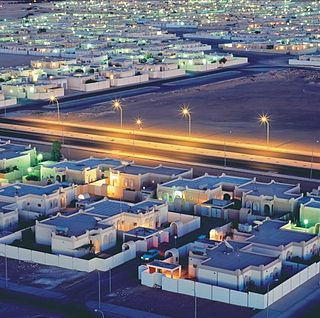 W
WHun or Houn is an oasis town in the northern Fezzan region of southwest Libya. The town is the capital of the Jufra District. The "International Autumn Tourism Festival", is an annual festival usually held at the end of September.
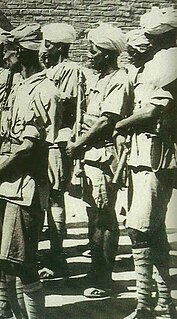 W
WThe Italian African Police, was the police force of Italian North Africa and Italian East Africa from 1 June 1936 to 1 December 1945.
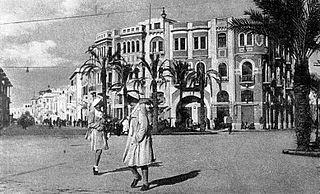 W
WItalian Benghazi was the name used during the Italian colonization of Libya for the port-city of Benghazi in Italian Cyrenaica.
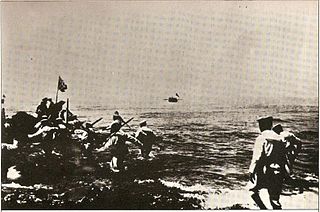 W
WThe Invasion of Libya by Italy happened in 1911, when Italian troops invaded the Turkish province of Libya and started the Italo-Turkish War. As result, Italian Tripolitania and Italian Cyrenaica were established, later unified in the colony of Italian Libya.
 W
WItalian Libya Railways was a group of small railways built in the Italian colony of Libya between the two World Wars.
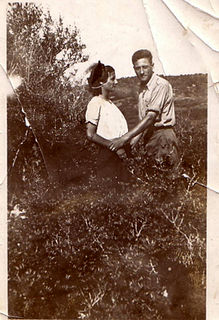 W
WThe Italian refugees from Libya were the Italian colonists and their descendants who were forced out of Libya after the end of WWII. Most took refuge in Italy, mainly after their expulsion in 1970, ordered by Muammar Gaddafi.
 W
WItalian settlers in Libya typically refers to Italians, and their descendants, who resided or were born in Libya during the Italian colonial period.
 W
WThe Libyan Coastal Highway, formerly the Litoranea Balbo, is a highway that is the only major road that runs along the entire east-west length of the Libyan Mediterranean coastline. It is a section in the Cairo–Dakar Highway #1 in the Trans-African Highway system of the African Union, Arab Maghreb Union and others.
 W
WLibyan railways are the Italian colonial railways in Italian Libya. They are related to the development of the railways in the Italian colonial empire. This history started with the opening in 1888 of a short section of line in Italian Eritrea, and ended in 1947 with the loss of Italian Libya after the Allied offensive in North Africa and the destruction of the railways around Italian Tripoli. The railways in the Italian colonial empire reached 1,561 km before World War II.
 W
WThis article lists the Governors-General of Italian Libya, a colony of the Italian Empire from 1934 to 1943.
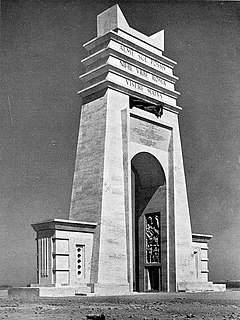 W
WThe Marble Arch, also Arch of the Philaeni, formerly known in Libya as El Gaus, was a monument in Libya built during the days of Italian colonization. The arch marked the border between Tripolitania and Cyrenaica, and was located on the Via Balbia near Ra's Lanuf.
 W
WʿOmar al-Mukhṭār Muḥammad bin Farḥāṭ al-Manifī, called The Lion of the Desert, known among the colonial Italians as Matari of the Mnifa, was the leader of native resistance in Cyrenaica under the Senussids, against the Italian colonization of Libya. A teacher-turned-general, Omar was also a prominent figure of the Senussi movement, and he is considered the national hero of Libya and a symbol of resistance in the Arab and Islamic worlds. Beginning in 1911, he organised and, for nearly twenty years, led the Libyan resistance movement against the Italian colonial empire during the Pacification of Libya. After many attempts, the Italian Armed Forces managed to capture Al-Mukhtar near Solonta and hanged him in 1931.
 W
WThe Muslim Association of the Lictor was created in 1939 as the Muslim branch of the National Fascist Party of Italy. It was found mainly and largely in Italian Libya. It was dissolved by the Allies during the invasion of Italy in 1943.
 W
WThe Port of Benghazi is a major seaport in the city of Benghazi, Libya, on the Mediterranean Sea coast within the Gulf of Sidra.
 W
WPostage stamps of Italian Libya were stamps issued by the Kingdom of Italy for use in Italian Libya, between 1912 and 1943.
 W
WThis is a survey of the postage stamps and postal history of Tripolitania, now part of Libya.
 W
WThe Provinces of Libya were prescribed in 1934, during the last period of colonial Italian Libya, and continued through post-independence Libya until 1963 when the Governorates system was instituted.
 W
WThere were few railway stations built in Libya during the 20th century. The ones that were built were done so by the Italians from the 1920s as part of their colonial administration. Today there are no functioning railway stations active in the country, but new ones are planned, as part of a new railroad system.
 W
WThe Second Italo-Senussi War, also referred to as the Pacification of Libya, was a long, bloody conflict that occurred during the Italian colonization of Libya between Italian military forces and indigenous rebels associated with the Senussi Order. The war lasted from 1923 until 1932, when the principal Senussi leader, Omar al-Mukhtar, was captured and executed.
 W
WThe Sid Ahmed el Maghrun concentration camp was an Italian concentration camp established in El Magrun in the Italian colony of Libya during the Pacification of Libya that occurred from 1928 to 1932. The camp is recorded as having a population of 13,050 people.
 W
WThe Soluch concentration camp was an Italian concentration camp in Suluq in the Italian colony of Libya during the Pacification of Libya that took place from 1928 to 1932. It was here that the famous Senussi anti-colonial rebel leader Omar Mukhtar was executed. The camp is recorded as having a population of 20,123 people.
 W
WThe Southern Military Territory refers to the jurisdictional territory within the colony of Italian Libya (1911–1947), administered by the Italian military in the Libyan Sahara.
 W
WSuluq is a town in the Benghazi District of the Cyrenaica region in northeastern Libya. It is located about 53 kilometers to the south-east of Benghazi.
 W
WTripoli Province was one of the provinces of Libya under Italian rule. It was established in 1937, with the official name: Commissariato Generale Provinciale di Tripoli. It lasted until 1947.
 W
WTripolitanian Republic, was an Arab republic that declared the independence of Tripolitania from Italian Libya after World War I.
 W
WThe Libyan Coastal Highway, formerly the Litoranea Balbo, is a highway that is the only major road that runs along the entire east-west length of the Libyan Mediterranean coastline. It is a section in the Cairo–Dakar Highway #1 in the Trans-African Highway system of the African Union, Arab Maghreb Union and others.
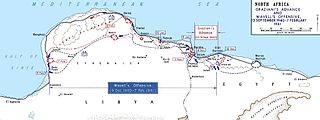 W
WThe Via della Vittoria was a military road between Bardia in Italian Libya and Sidi Barrani in western Egypt.
 W
WYousaf Borahil Almsmare was a well known Libyan Muslim resistance leader fighting against Italian colonization and deputy leader of the Libyan Jihad after the death of Omar Al-Mokhtar. He was killed in a confrontation with an Italian security forces in Libya at the age of 65.